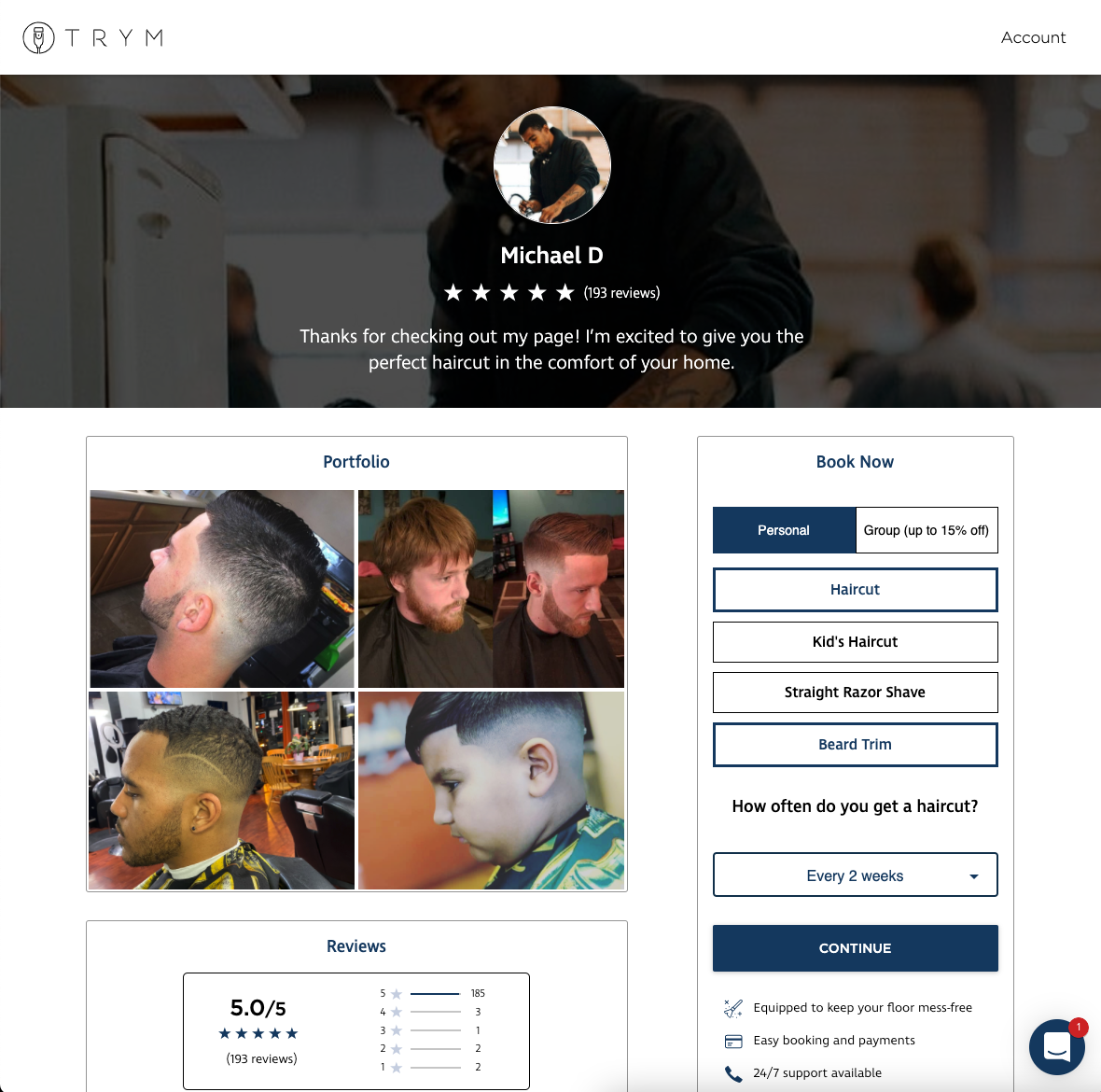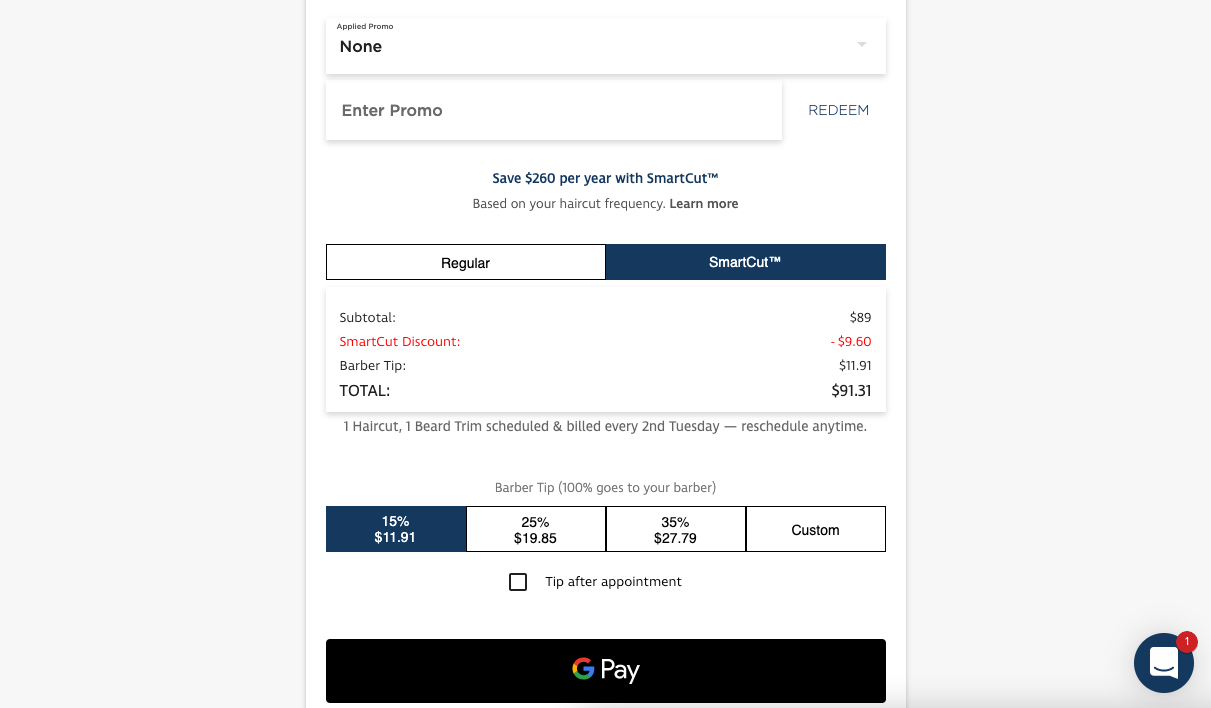
TLDR: Launched new features to improve monthly retention by 250%.
Role: Head of Product, UX design, Cross-team coordination
KPI: User retention rate, NPS, repeat purchase rate
Trym was designed to offer the most convenient way to find a quality barber and to receive a haircut, but most users weren’t returning for additional appointments.
I had to act fast as the founder and head of product to identify the cause of churn.
My goals was to:
- Increase retention
- Increase repeat purchase rate
- Increase barber’s monthly earnings
I setup meetings with my co-founder, engineers, designers, support reps, and barbers to discuss the problem in detail. It was important to make this a priority and to get insights from all angles. Without strong retention and a profitable earning channel for barbers, we didn’t have a strong product.
Together we discussed the barber’s experience, NPS scores, and service reviews.
Barber’s feedback: users often asked to text barbers directly which demonstrated a need for a stronger product but also a potential problem with our ability to faciliate the experience. Our barbers didn't notice a particular concern with the in-home haircut experience.
Survey data and NPS: The most common concerns were such as “Better online booking and appointment management”, "I was not blown away by the service. I miss my old barber." Our NPS score was 32. This could seem like a decent score, but not with 10% retention.
Cohort analysis: Our cohort analysis revealed direct correlation between shorter intervals between appointments and higher retention rates. Taking this data away from the meeting, I decided to conduct interviews to get more qualitative feedback directly from both churned and retained users.
After conducting 200 user interviews, it became clear the primary user concern was scheduling appointments. The quality of the haircut emerged as the secondary concern.
Scheduling
Most clients have a busy schedule and coordinating an appointment based on their barber’s availability doesn’t work for them. Monday-Friday they work until 5pm and most barber shops close around 7pm. On weekends, they would prefer not to spend two hours of their valuable family time on haircuts.
Quality
Many of our users booked due to a last minute need, but didn’t stick around because they preferred their regular barber. Some that did like their Trym barber were afraid to lose contact with them, so they felt compelled to text them off the platform.
Together with my team, we conducted a sprint to come up with some solutions.
To determine which solution was optimal, I hypothesized the impact per solution considering the cost of implementation:
(Impact x Number users impacted) / Cost of implementation
Here are the scores for each:
Scheduling
SaaS: (4 * 4) / 4 = 4
Subscription: (3 * 3) / 3 = 3
Quality
Training: (3 * 3) / 5 = 1.8
Weekly feedback review: (2 * 2) / 2 = 2
Of course, the calculations I made and my team's ideas are just the start. It's still not clear if any of these solutions could lead to stronger retention.
To start out we implemented a SaaS solution where barbers could refer new and existing clients. This would make scheduling easier and allow clients to receive a haircut from a barber they already loved.
After two months of implementation, I noticed that barbers weren't referring their own clientele. This business model wouldn’t scale if barbers didn’t offer it to their existing clients.
We decided to pivot from SaaS to the subscription which we had piloted with a few alpha users. We started running a beta program with our core users who booked a haircut every 1-4 weeks.
Following a successful beta program and further iterations on the subscription options, we launched the program and completely pivoted to a subscription first business model.
Based on our company strategy we created the following product strategy:
Mission
Accessible and personalized haircuts.
Company Strategy
Offer a platform where men can find and book barbers for in-home haircuts.
Product Strategy
SmartCut: a frequency-based subscription that will provide a 12% discount on endless haircuts. This will make re-booking easier for clients while making Trym barber's earnings more predictable.
Product Roadmap
Beta test SmartCut (Q3-Q4 20')
Launch SmartCut (Q1-Q2 21')
Get x barbers in SF on SmartCut (Q3-Q4 21')
Launch self service dashboard (Q3-Q4 21')
Product Goals
- 30% of users subscribe to SmartCut
- 35% of SmartCut users stay subscribed for 6 months
- Increase LTV of users from $158 to $414
- 70% of Trym barbers make $1k+ per month
Three months into implementing the subscription model, our metrics told an inspiring story:
- Increased retention from 10% to 35%
- Increased barber income, providing predictable earnings up to $5k/month
- Increased repeat purchase rate from 1.25 to 5
- Increase NPS from 32 to 73
This rewarding journey at Trym reinforced my belief in the power of an empathetic, user-centric approach to product management. It’s a testament to the success that can be achieved through rigorous problem-solving, cross-functional collaboration, and iterative testing.


